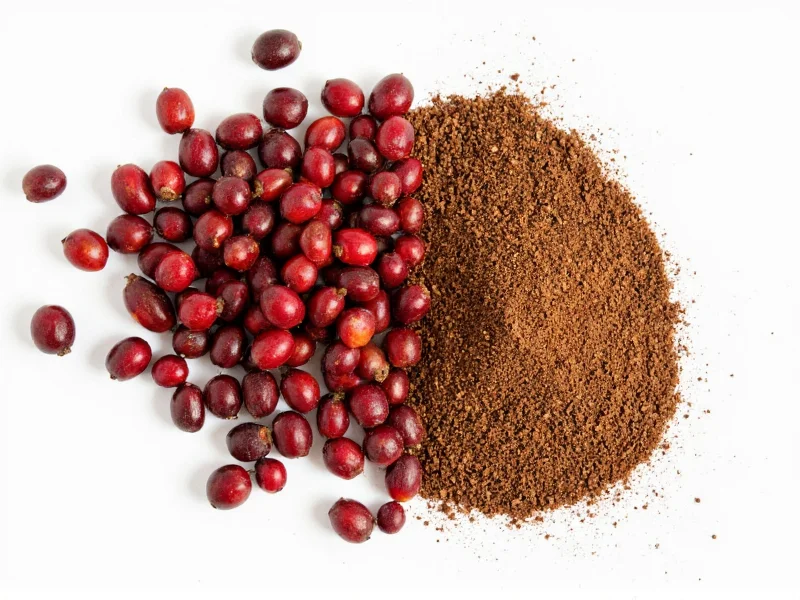Allspice, despite its name suggesting a blend, is actually a single spice derived from the dried berries of Pimenta dioica, a tropical evergreen tree native to Central America and the Caribbean. Understanding the differences between whole allspice berries and ground allspice is essential for maximizing flavor in your culinary creations. This comprehensive comparison examines flavor profiles, shelf life, culinary applications, and storage requirements to help you make informed decisions in the kitchen.
What Makes Allspice Unique
Allspice earned its name because its flavor profile resembles a combination of cinnamon, nutmeg, and cloves. The unripe berries are harvested and sun-dried until they turn brown and develop their characteristic aroma. Whether used whole or ground, allspice brings warmth and complexity to both sweet and savory dishes, from Jamaican jerk seasoning to pumpkin pie.
Allspice Berries: Characteristics and Advantages
Whole allspice berries appear as small, dark brown spheres about 5mm in diameter with a hard outer shell. Their flavor remains locked inside until crushed or ground, providing several distinct advantages:
- Superior flavor retention - The essential oils stay preserved within the intact berry
- Longer shelf life - Properly stored berries maintain quality for 3-4 years
- Custom grind control - You determine the coarseness for specific recipes
- Better for infusions - Ideal for pickling spices, mulled wines, and slow-cooked dishes
Chefs often prefer whole berries for dishes requiring extended cooking times, as they release flavor gradually without becoming bitter. When using whole berries in recipes, remember they need time to infuse—typically 20-30 minutes in liquid-based dishes.
Ground Allspice: Characteristics and Advantages
Ground allspice offers immediate flavor impact with its fine, reddish-brown powder consistency. The grinding process exposes more surface area, which creates both benefits and limitations:
- Instant flavor dispersion - Perfect for quick baking applications
- Convenience factor - Ready to use without additional preparation
- Better for dry rubs - Even coating on meats and vegetables
- Ideal for spice blends - Consistent incorporation with other ground spices
Ground allspice works best in recipes with shorter preparation times where immediate flavor integration is necessary. Bakers particularly appreciate ground allspice for cookies, cakes, and quick breads where the spice needs to distribute evenly throughout the batter.
Direct Comparison: Berries vs Ground Allspice
| Characteristic | Allspice Berries | Ground Allspice |
|---|---|---|
| Flavor Intensity | Milder initially, develops complexity over time | Stronger immediate impact, can become harsh if overused |
| Shelf Life | 3-4 years in airtight container | 6-12 months before significant flavor loss |
| Best Culinary Uses | Slow-cooked dishes, infusions, pickling, stews | Baking, dry rubs, spice blends, quick sauces |
| Substitution Ratio | 6 berries = ¼ teaspoon ground | 1 teaspoon ground = 24 berries |
| Cost Comparison | Slightly more expensive per ounce but better value long-term | Cheaper upfront but loses value faster due to shorter shelf life |
When to Choose Berries vs Ground Allspice
Selecting the right form depends on your specific culinary application. For slow-cooked dishes like braises, stews, or mulled beverages, whole berries provide gradual flavor release without becoming overpowering. The extended cooking time allows the complex flavor compounds to develop fully. Many professional chefs recommend adding 4-6 whole berries to a standard pot of chili or beef stew, removing them before serving.
For baking applications such as pumpkin pie, gingerbread, or spice cakes, ground allspice delivers immediate and even flavor distribution throughout the batter. The chemical reactions during baking work best with pre-ground spices that can integrate completely with other ingredients.
If you're making spice blends like jerk seasoning or garam masala, ground allspice ensures consistent texture and flavor distribution. However, for infused oils or vinegars, whole berries create a cleaner infusion without sediment.
Maximizing Freshness: Storage Guidelines
Proper storage significantly impacts how long your allspice maintains its flavor profile. For whole allspice berries, use an airtight glass container stored in a cool, dark cupboard. Avoid plastic containers which can absorb flavors. When stored properly, berries maintain peak quality for 3-4 years.
Ground allspice requires even more careful storage due to its increased surface area. Transfer to an opaque, airtight container immediately after opening the original packaging. Consider storing in the refrigerator or freezer for extended freshness—ground spices kept frozen can maintain quality for up to 18 months.
Never store either form near heat sources like your stove or in direct sunlight, as this accelerates flavor degradation. To test freshness, crush a berry between your fingers—the aroma should be immediately strong and complex. For ground allspice, rub a small amount between your palms; fresh spice will leave a noticeable scent on your skin.
Grinding Allspice Berries at Home
For the freshest possible flavor, grinding your own allspice berries is highly recommended. You'll need:
- Whole allspice berries (freshly purchased for best results)
- Coffee grinder dedicated to spices (not used for coffee)
- Small fine-mesh sieve (optional, for consistency)
Process 1-2 tablespoons of berries at a time for 30-60 seconds until you achieve your desired consistency. For baking, a fine powder works best; for some savory applications, a slightly coarser grind may be preferable. Immediately transfer to your recipe or an airtight container, as freshly ground allspice begins losing volatile compounds within hours.
Common Mistakes to Avoid
Cooks often make these errors when working with allspice:
- Using stale ground allspice - Check expiration dates and smell before using
- Over-substituting - 1 teaspoon ground allspice doesn't equal 1 teaspoon berries
- Adding ground allspice too early - In long-cooked dishes, it can become bitter
- Storing in clear containers - Light degrades spice quality rapidly
- Using coffee grinders for both coffee and spices - Creates flavor contamination
Remember that whole allspice berries require time to release their flavor—adding them at the beginning of cooking allows their complex notes to develop gradually. Ground allspice, by contrast, should typically be added in the last 15-20 minutes of cooking for savory dishes to prevent flavor degradation.











 浙公网安备
33010002000092号
浙公网安备
33010002000092号 浙B2-20120091-4
浙B2-20120091-4